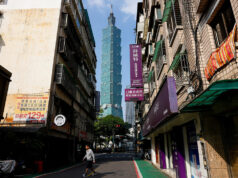Unemployment, underemployment decline in 2019
THE unemployment rate declined to 5.1% in 2019 from 5.3% a year earlier, while underemployment — an indicator of job quality — also fell to their lowest levels in 14 years, the Philippine Statistics Authority (PSA) said.
The PSA, citing the preliminary results of its 2019 Annual Labor and Employment Estimates — which is based on the average of the four rounds of PSA’s Labor Force Survey (LFS) — defines underemployment as the proportion of those working but looking for more work or longer working hours.
Both the unemployment and underemployment rates in 2019 were the lowest recorded since 2005, the year the government adopted new definitions for the LFS.
In 2019, the size of the labor force was estimated at 44.7 million out of 72.9 million Filipinos at least 15 years old. This is equivalent to a higher labor force participation rate of 61.3% in 2019, compared to 60.9% in 2018.
The employment rate, which is the proportion of the employed to the total labor force, also improved to 94.9% in 2019 from 94.7% last year. This translates to around 42.4 million employed, from 41.2 million previously.
This suggests that around 1.3 million jobs were generated this year, exceeding the government’s annual target of 900,000-1.1 million.
Meanwhile, the 5.1% unemployment rate this year is near the upper end of the 4.3%-5.3% target set in the Philippine Development Plan 2017-2022 for this year.
The services sector accounted for the biggest proportion of the employed population with a 58% share in 2019, up from 56.6% a year earlier. Industry accounted for 19.1%, little changed. The share of those employed in the agriculture sector fell to 22.9% from 24.3%.
Wage and salary workers accounted for 64.2% of the work force in 2019 from 63.8% in 2018. Self-employed individuals without any paid employees consisted of 27.1% (from 26.9%), unpaid family workers 5.8% (from 5.6%), and employers in their own family-operated farm or business 2.9% (from 3.6%).
Meanwhile, working hours averaged 42.1 per week in 2019, unchanged from a year earlier.
Full-time workers — those who worked for at least 40 hours in a week — increased to 68.8% from 68.4%. Part-time workers accounted for 30.3% of employed persons from 30.8%.
UnionBank of the Philippines, Inc. Chief Economist Ruben Carlo O. Asuncion attributed these improvements to the economy’s “growth momentum.”
“Robust economic growth has continued to (have an impact on) the economy’s labor market challenges,” Mr. Asuncion said in a mobile message.
“However, there is so much to be done. This year, the clear challenge was execution on the part of the government. But even though the 2019 budget was delayed, economic growth was still respectable compared to regional economies,” he added.
Gross domestic product (GDP) growth averaged 5.8% as of the third quarter. The economy grew 6.2% in the third quarter, the highest level so far this year following the weaker-than-expected 5.6% and 5.5% growth rates in the first two quarters due mostly to the spillover effects of the budget delay that stymied government spending.
Fourth-quarter and full-year growth data will be reported by the PSA next month.
“With 2020, both unemployment and underemployment are expected to further decline. If execution becomes better in 2020, labor market improvement is definitely expected,” Mr. Asuncion said. — Marissa Mae M. Ramos



